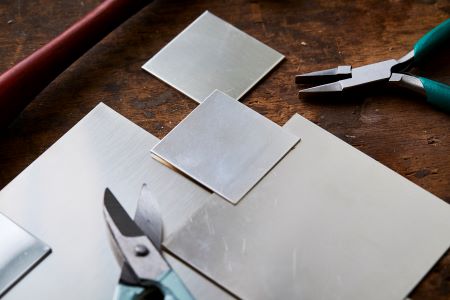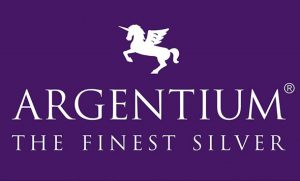Silver is a popular choice in jewellery making, but not all silver alloys are the same. Two of the most common options are traditional Sterling Silver and the more modern Argentium Silver. Both offer different benefits for makers and wearers alike. Understanding the differences between them is crucial whether you’re designing for durability, ease of work, tarnish resistance, or ethical sourcing.
What is Argentium Silver?
Argentium Silver is a newer type of silver alloy that contains a small amount of germanium. Typically available in two grades (935 and 960), Argentium has a higher silver content than traditional 925 Sterling Silver. Germanium is the key to Argentium’s exceptional tarnish resistance and its ability to self-heal surface oxide damage, which helps it retain a bright, white finish over time.
Argentium was developed in the 1990s as a modern alternative to Sterling Silver. It offers improved working properties and is particularly appealing to jewellers looking for high-performance materials that also support sustainable making practices.
Composition Comparison
- Sterling Silver: 92.5% silver, 7.5% copper
- Argentium 935: 93.5% silver, with germanium replacing some copper
- Argentium 960: 96% silver, even higher purity with added benefits
Key Benefits of Argentium Silver
- Tarnish Resistance: Argentium resists tarnishing much better than traditional Sterling Silver, reducing the need for frequent polishing.
- Fusing and Soldering: Argentium fuses cleanly without solder, making it excellent for granulation and joining without seams.
- Work Hardening and Annealing: Argentium hardens more slowly than Sterling, meaning less frequent annealing during forming. It also reacts well to heat-hardening treatments.
- Firestain-Free: Thanks to the presence of germanium, Argentium does not develop firestain, reducing the finishing time after soldering or heating.
- Bright Finish: Its naturally bright white finish requires less polishing, especially appealing for high-polish designs.
What is Sterling Silver?
Sterling silver, on the other hand, is a traditional silver alloy that’s been used for centuries. It consists of 92.5% pure silver, with the remaining 7.5% usually made up of copper. This combination makes the metal strong enough for everyday use, which is why it’s so widely used in jewellery.
However, copper is also the reason sterling silver is prone to tarnishing and firescale—a dark staining that appears during heating. While methods like rhodium plating can help, these add cost and complexity.
Argentium vs Sterling Silver: Key Differences
| Feature | Sterling Silver | Argentium Silver |
| Purity | 92.5% | 93.5% (Argentium 935) or 96% (Argentium 960) |
| Main Alloying Metal | Copper | Germanium |
| Tarnish Resistance | Prone to tarnish | Highly tarnish-resistant |
| Firescale | Common | Resistant |
| Hardness | Work-hardened | Precipitation-hardened (heat) |
| Melting Point | Lower | Higher |
| Weldability | Standard | Excellent for fusing and welding |
| Appearance | White with slight warmth | Brighter, whiter finish |
| Cost | More affordable | Higher cost due to benefits |
Argentium is stronger, brighter, and cleaner to work with than traditional sterling. It’s also seven times more tarnish-resistant, making it ideal for anyone wanting low-maintenance, high-performance silver jewellery.
Working with Argentium Silver
- Soldering: Requires a gentler touch and lower-temperature solders.
- Fusing: You can fuse components directly, ideal for clean joins in chain making or granulation.
- Finishing: Reduced need for polishing due to the natural brightness.
- Shaping: It work-hardens more slowly, allowing for longer working periods without annealing
However, it requires complete commitment. Mixing standard silver with Argentium or using shared tools can reduce its effectiveness. If you’re ready to take the plunge, it’s best to switch fully for the best results.

Argentium Silver is a great alternative to traditional Sterling for many jewellery makers. With its bright white finish, tarnish resistance, and sustainable qualities, it’s a material that performs well in both the workshop and the marketplace. Whether you’re an experienced maker or experimenting with new techniques, Argentium is a smart upgrade worth considering.
If you want to find out more about our Argentium range visit cooksongold.com/argentium-silver

Cooksongold


